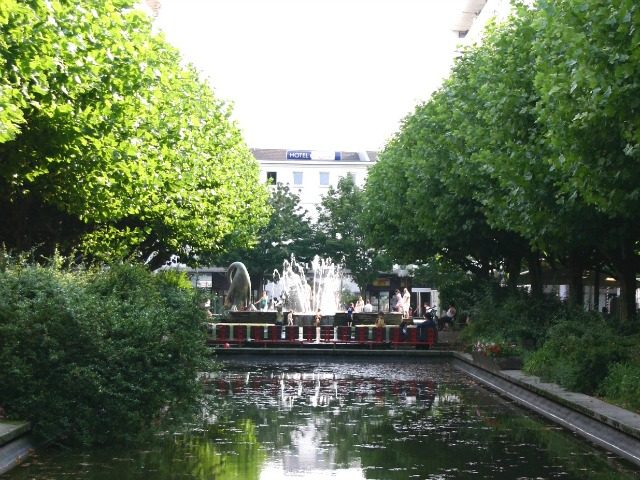While thousands of born Germans remain homeless, one city is building trendy downtown apartments for single male migrants on the corner of the Oberhausen Peace Square. The majority of the million migrants who arrived in Germany last year are now in housing, yet in 2013 cities claimed there was no room to accommodate German homeless.
Construction of the apartments, which are located in the heart of Oberhausen’s shopping district, is nearly complete. It is expected that migrants who arrived in Germany among the influx of foreigners who washed up in Europe during the migrant crisis will be able to move into the fashionable flats by the end of this month.
The councillor responsible for real estate management in Oberhausen, Jürgen Schmidt, said the city had managed to house 90 per cent of the 1,400 migrants who arrived there in 2015 and 2016 during Europe’s “migrant crisis”. In 2013, cities said they were struggling to provide even emergency shelters for German homeless in winter.
Emergency shelters for the homeless are very basic. Most cities have a disused building in which to allow homeless people to stay during the coldest winter nights. As there is insufficient space in many cities’ shelters, the majority of homeless are forced to sleep on tables and chairs.
When the temperature drops to a deadly level — several degrees below sub-zero, some German cities erect emergency shelters. In smaller towns, however, a number of Germany’s 380,000 homeless freeze to death most winters.
The property marked for migrants in Oberhausen is on the corner of Peace Square, a picturesque park with shops and a charming neoclassical building. These center around an ornamental lake with a fountain at one end, the water lined with trees and framed by flower beds. Oberhausen Councillor Schmidt told Der Westen that migrants moving in will be “mostly single men from other refugee sites”.
The council gave the go-ahead to the apartments, which are designed with the single male migrants in mind, because it was difficult to fit them in elsewhere. Most of the accommodation in which German taxes are paying for migrants to live is designed for more than one person and so many single men found themselves on a long waiting list for housing.
Despite this new development and two others which are nearly completed, Councillor Schmidt appealed to homeowners in Oberhausen to free up more properties for migrant use.
He said: “We are still looking for small apartments for single people, but also apartments for large families.”
Previous appeals by the town hall to the property owners in the city, to provide housing for refugees, have been successful. Councillor Schmidt said the city had received “many offers” of housing and “great apartments” for migrants, and because of this they had managed to house 70 per cent in private properties.
While the city has provided migrants with their own houses and apartments Oberhausen has a building which accommodates just 80 homeless people during Germany’s harsh winters. The shelter is packed out, in the coldest months, when the shelter is available and many of the city’s homeless have to sleep outside in the freezing weather.
Mr. Schmidt said Oberhausen had fulfilled the accommodation needs of migrants there “99 per cent compared with other cities” and noted the city already has plans in place for future migrant influxes.
“If the number [of migrants] rises significantly, we can house them at the Froebel School, Eisenheim High School and Stötzner School,” Mr. Schmidt said. The councillor noted that with the city’s three new blocks of housing for migrants, there are now 400 more places for migrants to live.
There appears to be significant discrepancies in the way politicians handle migrants and the way they treat Germany’s homeless. In October last year, after the country lacked enough permanent housing for all of the migrant influx, politicians expressed alarm that 3,000 of them were sleeping in heated tents. Christian Democratic Union (CDU) party chair, “Our hope is that no refugee would freeze to death in Germany,” Thomas Strobl, chairman of the governing Christian Democratic Union party, promised that the government would not allow any migrants to freeze to death.
CDU member Juila Klöckner said the tents were “inhumane”, and refugee spokesman for the Green Party, Claudia Stamm complained that heated tents are cruel, as migrants would be cold if they had to step outside the tent.
She said: “Municipalities and cities cannot allow refugees to live in tents during the winter. Even if the tents are heated, you would still need to leave the tent and shower in the snow.”
In Hamburg, migrants protested living in the tents — which are government-provided — holding signs reading “we’re cold” and “please help us”. October temperatures in the city generally range from 8 to 13 degrees centigrade.

COMMENTS
Please let us know if you're having issues with commenting.